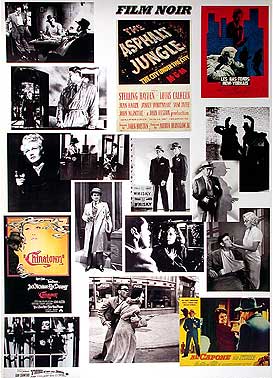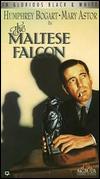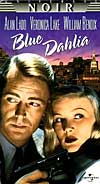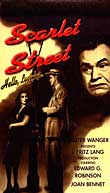Headlines included in schedule may be classified according
to the uses for which they are intended and the kind of job that
they have to perform.
In general, they fall into the following
groups
In general, they fall into the following
groups
a) Large headlines, Banners and Spreads.
b) Top heads.
c) Secondary heads.
d) Subordinate heads.
e) Contrast heads.
f) Special feature and departmental heads.
a. BANNER HEADS:
A banner headline is run across eight columns, and placed on top of the front page of the newspaper. It is set in the highest point size that the newspaper style permits. No other headline on the front page is written in a point size bigger than the banner headline. Newspapers today run banners in the upper lower format too.
The range of the Banner heads extends
from 72 points to 120 points, or even larger in certain instances.
Bolder, larger, open-faced types are usually used in banner
heads, since the banner holds the best position on the page and
it should be strong and bold. Banner heads are generally set in Bodoni Bold, Bodoni
Bold Italic, Gothic face types such as Tempo, Spartan and
Railroad Gothic etc.
The usage of bold and italics depends upon how many banners are there in the page.
In writing headlines set in lower case and all caps are more legible, and most desirable from the standpoint of the reader.
b. SPREAD HEADS:
The usage of bold and italics depends upon how many banners are there in the page.
In writing headlines set in lower case and all caps are more legible, and most desirable from the standpoint of the reader.
b. SPREAD HEADS:
For important and heavy display purposes after the banner comes the spread heads. They display the biggest news of the day with the banner heads.
Generally the spread heads
that are found in the schedule are of the two column and the
three-column variety. They may consist of one or more decks
with different widths depending on the importance of the story
and the effects that are desired on the page.
In a two column head, the first deck ordinarily consists of 24-30-,
Or 36 points type. The second deck is generally set in 14 point,
which provides good gradual decrease down into a smaller body type of the story, which follows. The width of the heads differs
invariably affecting the number of decks it has and their width.
c. TOP-HEADS:
From the standpoint of display Top-Heads come after the banners and spreads. They are called Top-Heads because they feature on the top of the page over some of the biggest and important stories of the day.
c. TOP-HEADS:
From the standpoint of display Top-Heads come after the banners and spreads. They are called Top-Heads because they feature on the top of the page over some of the biggest and important stories of the day.
It is difficult to find uniformity in
the newspapers as to the number of decks or styles of the forms
used in these Top-Heads. However from the general study of
newspapers may find three types of Top-Heads, namely:
(a) Multiple deck headline,
(b) Two deck headline,
(c) Single deck headline.
For multiple deck Top-Heads, the form combined is four or sometimes more than four.
In this particular style of head the top most deck casually consists of three to four times. The letters used are generally of the bold face type, which are set in about 30 to 36 points.
(b) Two deck headline,
(c) Single deck headline.
For multiple deck Top-Heads, the form combined is four or sometimes more than four.
In this particular style of head the top most deck casually consists of three to four times. The letters used are generally of the bold face type, which are set in about 30 to 36 points.
The second deck is smaller than the first
and may vary in the type used. This deck is generally set in 14
point bold face.
The third deck ordinarily set in larger type than that in the second and the fourth decks, which might be set in 18 point bold face.
d. SECONDARY HEADS:
There are various other stories which need prominence in display other than top stories which fall under top-heads. Such headings and stories are placed above the fold, and they are referred to as secondary heads.
The third deck ordinarily set in larger type than that in the second and the fourth decks, which might be set in 18 point bold face.
d. SECONDARY HEADS:
There are various other stories which need prominence in display other than top stories which fall under top-heads. Such headings and stories are placed above the fold, and they are referred to as secondary heads.
Usually the same style and method is
used in secondary heads as in the top heads. The secondary
heads may have one to two decks. The top deck may consist of
two lines or in some instances 3 lines. The second deck consists
of 3 to 4 lines and their size and type is same as that of the top
heads' second deck. If two secondary heads are included, the no.
3 headline, each consisting of two lines, with the first deck set in
24-point type and the second in 12 or 14-point type.
The secondary heads have an important place in the daily
news headlines. They brighten up the center area of a page.
When there is an abrupt drop from major headlines, which are
huge and strong, to smaller structures, the page may appear to
be grey and weak. To overcome such an unwanted effect good
usage of secondary headlines will help the sub-editor. Secondary headlines are of prime importance in inside-page makeup. Here
they are ordinarily used in place of top heads, which frequently
are reserved for the front-page use only.
They are also used as
main heads for stories in the inside pages. In the interest of the
good design and makeup of the newspaper two or three types of
good secondary headlines should be provided, with appropriate
sizes and styles of types and fonts.
e. SUBORDINATE HEADS:
For smaller and less important stories headlines in type sizes from 18 point downward to 12 point are used. Sometimes down until 8 point. Such headlines are known as subordinate heads. In most of the newspaper we find that subordinate heads have 1 or 2 decks with 2 or 3 lines. The headline forms that are used are often flush-left or drop-line and generally they are written in bold face or bold face Italics. For example: English India should agree to tripartite talks India should agree to tripartite talks 66 There is no Telugu example in italic letters. In many instances we find cross-line and inverted pyramids being used. However, cross-line form of head in subordinate headlines is not advisable because it is too small to admit a sufficient number of words in it. Usage of larger sizes in subordinate heads is necessary as one can be assured that greater attention value and sufficient tone is present to break up the dull mass of body type in a color. Though there is a necessity of using several subordinate head it should always be remembered that their usage should not be indiscriminate. Even though arrangements such as usage of more number of subordinate heads provide for a larger number of stories on the page, such a practice is a great mistake. The resulting page designs are grey, dull and uninteresting. So usage of subordinate heads has to be done with lot of caution so that the page design does not get spoiled.
f. CONTRAST HEADS:
e. SUBORDINATE HEADS:
For smaller and less important stories headlines in type sizes from 18 point downward to 12 point are used. Sometimes down until 8 point. Such headlines are known as subordinate heads. In most of the newspaper we find that subordinate heads have 1 or 2 decks with 2 or 3 lines. The headline forms that are used are often flush-left or drop-line and generally they are written in bold face or bold face Italics. For example: English India should agree to tripartite talks India should agree to tripartite talks 66 There is no Telugu example in italic letters. In many instances we find cross-line and inverted pyramids being used. However, cross-line form of head in subordinate headlines is not advisable because it is too small to admit a sufficient number of words in it. Usage of larger sizes in subordinate heads is necessary as one can be assured that greater attention value and sufficient tone is present to break up the dull mass of body type in a color. Though there is a necessity of using several subordinate head it should always be remembered that their usage should not be indiscriminate. Even though arrangements such as usage of more number of subordinate heads provide for a larger number of stories on the page, such a practice is a great mistake. The resulting page designs are grey, dull and uninteresting. So usage of subordinate heads has to be done with lot of caution so that the page design does not get spoiled.
f. CONTRAST HEADS:
Any headline that is used to add some variety and liveliness to the page are called "feature" or "contrast heads". Placing two headlines of the same type and sizes beside each other in adjoining columns may not be so appealing to the page design. To present such inevitable usages contrast heads are very useful. If 2 heads are arranged in the manner mentioned above tend to make up a single unit as far as tone value is concerned. Greater contrast it is believed, will make the resulting effects less monotonous and more interesting. Contrast heads are generally set in italics or any other type which can bring a wide contrast and make it different from the types used in the main headline dress. About two or there lines are used in a single column in width and size, depending upon the effect that is desired. Many headline schedules have box heads or partially boxed heads as the contrast heads. Contrast heads can be of one deck or two decks according to the importance of the stories that are featured in the newspaper. Common sizes used in contrast heads vary from 18 point, 24 point, to 30 point fonts. The 'Astonisher' type of headline is a good example of a contrast head.
g. CUT-LINES:
Like the headlines there are various types of heads, which accompany pictures, and are basically used to display and advertise the news as well as enlarge upon it. Such types of heads should also be included in the headline schedule. Lines that are used to explain or to help tell the news involved in an illustration or a picture are called cut-lines. A line, which is placed over or above the picture, is called "over-line" or "caption", and the lines of type that are placed beneath or under the picture 63 are called as "underlines". These over-lines and underlines together are called cut-lines. Newspapers use cut-lines either ways i.e. over and under the picture according to their convenience and page design. Generally bold face types and Italic faces are used for cutlines. The bold ones are more preferred as they have a stronger design and more contrast is shown. Flush-left form or over-line flush-left form are more often used in this case. Some times these pictures are given titles, which form a part of the cut-lines. These titles can feature either above or below the picture. Another common plan that is used in cut-lines is that, first few words in the first line of the under-lines acts as a title. These words are usually set in capitals. Ordinarily 14 or 18-point type is used over pictures of one column in width and 18 or 24-point type are used for picture in two-column width. When cuts are from one to three columns in width, the under-lines usually run the full length of the printed picture. If the picture or illustrations exceed 4 or more columns, cut-lines should be set in two or more columns depending upon the size of the picture. Such an arrangement for larger pictures is necessary because it is difficult to read lines that are longer than three columns. Square-Serif, Gothic, Roman types are commonly used for cut-lines. Some newspapers prefer to box the caption over the picture, and others let the first few words of the cut-line to serve as a caption. Added emphasis could be created by making captions or some times the underlines to feature in capitals or 2.1
Most of the newspapers commonly use banner heads for their best news.
a) The cross-line: This is one of the simplest forms available. It basically consists of a single line and one or more columns in width. It may run flush on both sides or words and is centered in measure. Many newspapers commonly use this type. When headlines have one or more columns,
b) The Drop-line: This type is also known as the 'step line' or 'step head' because the lines in this type are indented and step down uniformly and progressively from the left. It usually consists of two or three lines. The drop line form is used as the main headline as the top deck, when the news has two or more decks. Ex:
c) The Inverted pyramid: This form is usually employed more as a subordinate deck in a headline. It generally consists of three lines, write the top line exceeding all the way across the column. The next two lines are set to be shorter than the one above, with words centered according to the count or measure. It is one of the difficult forms of headlines as it takes more time of the sub-editor's time in setting. Still it is one of the most widely used forms of headlines.
d) The Hanging intention: The desire to include more lines into the headlines have resulted in this type of headline. Like most of the smaller types of headlines, this type is also used as a subordinate deck. The first line is set to flush on both the sides; and the other lines that follow are indented from the left with an even amount of space.
e) The Flush left: It is one of the modern headline forms. It is simple in its design and provides for a lot of freedom in writing headlines. In this type there are one or more lines and the lines are always set to flush to the left hand side of the column.
f) The Spread: A headline or deck, which extends over two or more columns in length, is known as the 'spread'. The 3S flush-left, the drop-line and the cross line are the most common headlines used in the spread. The above-mentioned forms of headlines are very popular and most commonly used in most of the newspapers and magazines. There are various other headline forms or styles, which are used less commonly used or out of use. Some such forms of headlines arc listed to know the variety in headline forms.
a) The Flush line: The unit count in this form of headline must be exact in order to avoid, unwanted amount of white space between the letters or words. Hence, sub editors take great care while writing these headlines. It is the flush-left form taken to it extremes. The amount of white space is reduced between the words to a minimum and the headline looks crowded and uninviting. In most of the newspapers this headline is replaced by the flush-left due to its greater simplicity. E
b) The Astonisher: It belongs to one of the recent trends in headlines. In this type, a smaller line is set in a smaller type above the main deck. This smaller typed line is a striking statement or facts or idioms, which are intended to gain the attention of the reader. Occasionally it reads into the main deck. This is also called the 'read in' headline, 'over line' headline. Or 'whip-lash'












 The primary moods of classic film noir were melancholy, alienation, bleakness, disillusionment, disenchantment, pessimism, ambiguity, moral corruption, evil, guilt, desperation and paranoia.
The primary moods of classic film noir were melancholy, alienation, bleakness, disillusionment, disenchantment, pessimism, ambiguity, moral corruption, evil, guilt, desperation and paranoia. The themes of noir, derived from sources in Europe, were imported to Hollywood by emigre film-makers. Noirs were rooted in German Expressionism of the 1920s and 1930s, such as in The Cabinet of Dr. Caligari (1920, Germ.)or Fritz Lang's M (1931, Germ.), Fury (1936) and You Only Live Once (1937). Films from German directors, such as F. W. Murnau, G. W. Pabst, and Robert Wiene, were noted for their stark camera angles and movements, chiaroscuro lighting and shadowy, high-contrast images - all elements of later film noir. In addition, the French sound films of the 30s, such as director Julien Duvivier's Pepe Le Moko (1937), contributed to noir's development.
The themes of noir, derived from sources in Europe, were imported to Hollywood by emigre film-makers. Noirs were rooted in German Expressionism of the 1920s and 1930s, such as in The Cabinet of Dr. Caligari (1920, Germ.)or Fritz Lang's M (1931, Germ.), Fury (1936) and You Only Live Once (1937). Films from German directors, such as F. W. Murnau, G. W. Pabst, and Robert Wiene, were noted for their stark camera angles and movements, chiaroscuro lighting and shadowy, high-contrast images - all elements of later film noir. In addition, the French sound films of the 30s, such as director Julien Duvivier's Pepe Le Moko (1937), contributed to noir's development. The first detective film to use the shadowy, nihilistic noir style in a definitive way was the privotal work of novice director John Huston in the mystery classic
The first detective film to use the shadowy, nihilistic noir style in a definitive way was the privotal work of novice director John Huston in the mystery classic  The acting duo of Alan Ladd and Veronica Lake was first teamed in the superb early noir thriller This Gun For Hire (1942) (with the tagline: "He's dynamite with a gun or a girl"). From the novel A Gun For Sale by renowned British novelist Graham Greene, the moody noir featured Ladd in a star-making role (his first lead role) as a ruthless, cat-loving, vengeful, unsmiling San Francisco professional hit-man named Raven working for a peppermint-candy loving fat man Willard Gates (Laird Cregar) and his wheelchair-bound Nitro Chemicals executive Alvin Brewster (Tully Marshall) - both double-crossers who were selling secrets to foreign agents (the Japanese). Ladd was paired with popular wartime pinup star Lake as nightclub showgirl singer Ellen Graham, his hostage (and unbeknownst to him working as a federal agent).
The acting duo of Alan Ladd and Veronica Lake was first teamed in the superb early noir thriller This Gun For Hire (1942) (with the tagline: "He's dynamite with a gun or a girl"). From the novel A Gun For Sale by renowned British novelist Graham Greene, the moody noir featured Ladd in a star-making role (his first lead role) as a ruthless, cat-loving, vengeful, unsmiling San Francisco professional hit-man named Raven working for a peppermint-candy loving fat man Willard Gates (Laird Cregar) and his wheelchair-bound Nitro Chemicals executive Alvin Brewster (Tully Marshall) - both double-crossers who were selling secrets to foreign agents (the Japanese). Ladd was paired with popular wartime pinup star Lake as nightclub showgirl singer Ellen Graham, his hostage (and unbeknownst to him working as a federal agent). Early classic non-detective film noirs included Fritz Lang's steamy and fatalistic Scarlet Street (1945) - one of the moodiest, blackest thrillers ever made, about a mild-mannered painter's (Edward G. Robinson) unpunished and unsuspected murder of an amoral femme fatale (Joan Bennett) after she had led him to commit embezzlement, impersonated him in order to sell his paintings, and had been deceitful and cruel to him - causing him in a fit of anger to murder her with an ice-pick. Director Abraham Polonsky's expressionistic, politically-subversive Force of Evil (1948) starred John Garfield as a corrupt mob attorney.
Early classic non-detective film noirs included Fritz Lang's steamy and fatalistic Scarlet Street (1945) - one of the moodiest, blackest thrillers ever made, about a mild-mannered painter's (Edward G. Robinson) unpunished and unsuspected murder of an amoral femme fatale (Joan Bennett) after she had led him to commit embezzlement, impersonated him in order to sell his paintings, and had been deceitful and cruel to him - causing him in a fit of anger to murder her with an ice-pick. Director Abraham Polonsky's expressionistic, politically-subversive Force of Evil (1948) starred John Garfield as a corrupt mob attorney.

















